Our story
Welcome to Maison Degas
Centrality of the location, attention to the guest, re-enactment of the particular atmospheres of the ancient center among sediments and traces of past eras.
Once upon a time, a long time ago...
Austere convents, churches embellished with the creativity of the Baroque, the pattering of steeds’ hooves, glittering carriages at festivals at princely stone palaces, and then …a swarming of artistic craft activities: glass, copper, ceramics, shepherds, mandolins and musical instruments, tailors: the craftsmen of Naples capital.
Today at No. 53 Calata Trinità Maggiore, on Piazza del Gesù Nuovo, you can discover, between the chiseled stone of the 16th-century Palazzo Pignatelli di Monteleone and the gentle buzz of the street, our small and cozy hotel.
Maison Degas in Gesu’ Nuovo Square, an ideal starting point for a cultural and emotional stay.
From here we set out to discover that…3,000 plus years of history speak through the stone molded by fine architecture, the liveliness and curiosity of local people and from all over the world, the alternation of small streets that open up into spaces immediately chosen for chance encounters and otherwise: all of this exerts a special charm that will captivate our guests between the whispering of the squares and in-depth historical and artistic insights.
The welcome at Maison Degas…a meeting, an exchange between sensibilities, an opportunity to get to know each other between a good coffee, pleasant, soft music, a taste of typical pastry.
Those who choose us are, above all, guests who deserve attention.
Our hotel is conveniently located
In Piazza del Gesu’ Nuovo, the beginning of Spaccanapoli and the Decumani.
From here…access to the HISTORIC CENTER, a UNESCO WORLD HERITAGE OF HUMANITY.
Between the austere Gothic, the serenity and preciosity of the majolica-tiled cloister within the Monumental Complex of St. Clare the festivity of the Baroque, under the charitable and reassuring gaze of the statue of the Immaculate Conception, towering above the obelisk, which welcomes the many pilgrims continuously flowing to the Church of Gesù Nuovo, you can stay in our small Hotel located within the sixteenth-century Palazzo Pignatelli di Monteleone, now a National Monument.
An inscription on the right side of the portal donated and placed in 1996 by the French Institute Grenoble, recalls that the family of HILAIRE GERMAN EDGAR DEGAS (1834-1917) lived and worked here in the 1800s and that the great French Impressionist painter and sculptor himself lived and worked here.
The historic center of Naples was inscribed on the UNESCO WORLD HERITAGE list in 1995, with the following motivation: Naples is one of the oldest cities in Europe, whose contemporary urban fabric preserves the elements of its long and important history.
The centrality of the location will unveil to hotel guests the traditions, cultural and conference events, historical and artistic treasures of Naples of yesteryear, and shopping streets.
For those traveling for pleasure, for culture, for relaxation, for those staying for business and want a quiet environment in the middle of the old town, strategically located to optimize all travel needs.
In the Neapolitan city between memorable pizzas and historic monuments: from Spaccanapoli to Piazza del Plebiscito, passing through the Chiaia neighborhoods and the famous Santa Chiara monastery.
There it is again Spaccanapoli, straight as if pulled with a ruler after centuries and centuries, the most famous street in the Neapolitan city, busy heart and street of merchandise.
Evening Courier, September 05, 2013
In Naples as at home ... a warm welcome from a caring staff
We intend to make the ‘guest feel the warm atmosphere of home, suggesting the recreational and cultural events that the city offers (events,congresses, exhibitions, concerts, shows, etc.), with special attention to the significant artistic craft tradition of Naples capital of the kingdom, the artistic contemporaneity and the typicality of the products of the Neapolitan and Campanian eno – gastronomy.
And then … in the morning a meeting, a ‘convivial atmosphere, “a chat” to discover the tradition of Neapolitan pastry with tastings of the tasty specialties … all enlivened by a quiet musical background, with instrumental virtuosity of the repertoire of classical and jazz music.
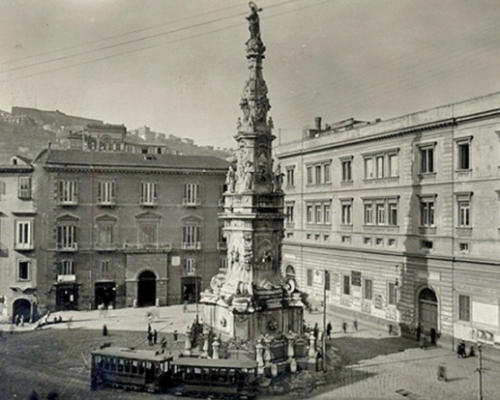
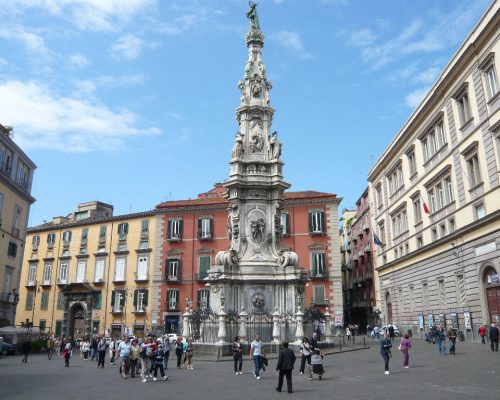
Our structure

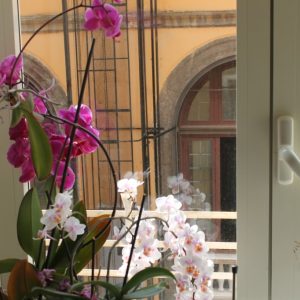
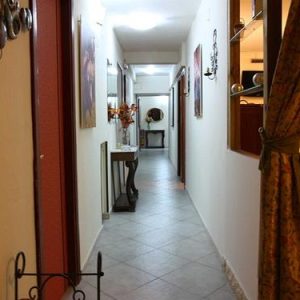

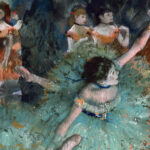

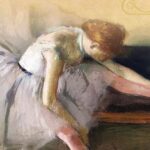
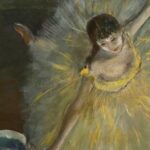

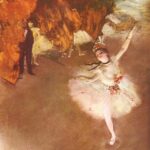


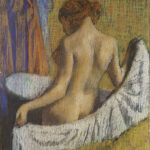

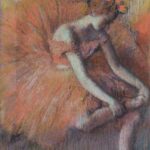

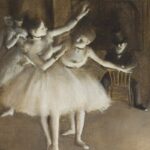

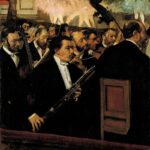
Degas ballerinas
Taken from “Degas – Ballerinas”, Arnoldo Mondadori Editore, Collana “La Palette”, 1956 […] Movement, here is the favorite theme of this sedentary man who says that to work profitably you need to “sit down”. Prisoner of a laboratory where he recreates reality, the one who, according to Valéry, “saw nothing in pink” external with suffering the delightful and fleeting moment, transforms the mute canvas into a field of action, makes it the place of duration and depth. Every painter has something of the magician in him. What is wonderful about Degas is that he never works for the hope of achieving success, but for the joy, completely inner, of overcoming difficulties. His hand rivals in skill with that of the sockeys, modistes and trapezests. He too, like them, maintains the harmonious synchronism between eye and hand through exercises, repetitions, training, with the severity towards himself indispensable to athletes, magicians, acrobats, dancers, and actors who want to stay in “shape”. […] Introduced by his loyal friends, the musician Dihaut and Ludovic Halévy in the environment of the Opéra, Degas, starting from 1872 – date of one of the first Ridotto of dance, that of the Camondo collection – and especially in the period 1874 – 1880, he will dedicate himself continuously to the studio of Le petit être neuf à la mine hardie De qui le bras plié dans la ligne choisie Équilibre, balance et son vol et son poids.
The dance classes, all the preparatory exercises, the rehearsals in the reduced or on the stage, the life of the stages, the quintes, the trivial gestures as well as the professional gestures – scratching the back, yawning with fatigue, picking up a pedules, lacing a stocking – excite his curiosity no less than the representation seen from the room and the atmosphere of unreality that is created on stage, thanks to the complicity of costumes, scenarios, spotlights and ballets. How many mornings, how many afternoons spent in via Le Pelletier or at the reduced Opéra, watching the “class of the little ones” training at the bar, on the orders of the old master of the ballet in a coat. Hundreds of drawings, engravings, canvases, pastels, monotypes testify to the passion with which Degas studied these dance scenes that he then revived one by one on the canvas, transforming the fleeting impressions into lasting shows of grace. […] From the pastel, which is at the same time a graphic sign and color, the most rapid, vigorous and vivid expressive medium of oil, Degas has drawn the most unusual effects. It would seem that before him no one knew how to exploit the “dead tones” so skillfully to exalt, thanks to the contrast, the warm tones and make isolated figures (like the Star of the Camondo collection) or in groups (the Three, the Four dancers), caught in action or at rest, the most splendid bouquets of flowers. Degas has now reached full artistic maturity and, in his work, technique and content come common in perfect balance. These exquisite relationships of color that admirably agree with linear harmony, cause the viewer to almost forget the subject of the painting to abandon himself to the delights of a wise orchestration in which all the artifices of the craft contribute to recreate a reality that has a wonderful.
Degas in Naples
His trips to Naples in his youth
Degas has always stayed in Naples since 1854, his city on his father’s and grandfather’s side, where he will repeatedly portray his family members. I chased Degas from the moment of his landing at the port of Naples, walking along the way to Grandpa Hilaire’s house, in the Pignatelli building in Monteleone. In that Palace still resides the last descendant of the Degas house, with this person a very smart professional in his field, I had numerous conversations in which we talked about his illustrious relative, the painter’s cousin, Lucia Degas great-grandmother of Dr. Mario Bozzi, (the name of Degas’ great-grandson) and grandfather Hilaire who loved the young painter very much. The other relatives of the painter lived in Pomigliano d’Arco, aunt Stefanina, cousins and others. In short, the Degas, in Naples were a large tribe. I wanted to investigate -because it is an investigation- four years of the life of the young Degas in Naples when he was not yet Degas. The path of his youthful training – the basis of this research are the words of Paul Valéry, a friend of the painter, who states: “If I did art criticism, I really think I would risk a triple-rooted hypothesis. I would try to explain this mimic way of seeing Degas with the coexistence of three conditions. First of all, there is that Neapolitan blood I talked about. The mimicry comes from Naples, where there is no word without a gesture, a story without a multitude of characters, always possible and always ready. I would also observe that the Degas problem…”. His first French biographers and critics, including the various Lemoisne, Coquiot, Lafond etc… while noting his presence in Naples in the youth period in which feelings are formed and fixed indelibly, follow up on this fact as if it were purely incidental, not at all important for his training. Only the Blanche writes:- “This Parisian eleve in Naples sees man and contemporary life with the eye of a modern and an Italian of the fifteenth century”. I totally agree with that. Degas has always expressed himself in Neapolitan leaving his Parisians amazed. The root of his art is different, further from the Parisian cultural terrain. Here is what Paul Lafond thinks, after specifying “that in 1856 the artist was in Italy, he adds: “Il venait d’atteindre ses vingt- trois ans et nous savons qui il avait une parte de sa famille a Naples” But promptly warns: “Il connaissait deja son metier de peintre”. Tinus and precise biographers like the Lafond reject the recognition of an Italian influence in the Degassian formation, they reject it as a danger to be averted.
Influences of Neapolitan artists in the formation of Edgar Degas
Influences in the degassian formation of the early days can be found in the Palizzian-morellian reform of the mid-nineteenth century. The reform of the arts in Naples interests Degas, his is a receptive mind and sensitive to the new. In the Neapolitan artistic environment he knows how to muggle beautifully. He is interested in Filippo Palizzi’s art. Paolo Ricci writes about this:-” Filippo must have met Degas in Naples. It is ascertained that Degas had direct and frequent contacts with Neapolitan painting, in 1854 he was in Naples probably there for a long time, if he could make contact with the Royal Institute of Fine Arts and the courses of Mancinelli, for drawing, by Camillo Guerra, for painting… by Gabriele Smargiassi for the landscape” If Somarè and Biancale are excluded, it seems to me that no one has tried to deepen the link between the Neapolitan artists and Degas. However, it can be said that relations between Palizzi and Degas must have been very frequent and the traces are found both in the works of the French painter and in those of the painter from Abruzzo…. As I went on in my research, I realized that I had done well to sift through the sources immediately following the death that occurred in 1917 in Paris where he was born in 1834. It would be too reductive to think of a Degas of “detachment and Italian imprint, and precisely Neapolitan?” Says Biancale. It would be reductive in my opinion not to think so at all. Degas is often at the Bourbon museum, where he makes numerous copies of the ancient. He is present in Herculaneum, Pompeii, where he studies mosaics and paintings. He has a predilection for underground Naples, he visits the catacombs of S. Gennaro, copies the wall paintings, true examples of early Christian art. He is interested in the interiors of the churches, he copies a Donatello in the Brancacci chapel of S.Angelo in Nilo and continues like this for his cultural itinerary….. The copies will be very useful for his future fulfillment…. Taken from the book “Rosa Spinillo, Degas and Naples – the youth years, Plectica, Salerno 2004”
FOCUS: The Pignatelli Palace of Monteleone
The palace, which is now a National Monument, was built in the sixteenth century at the behest of Duchess Giroloma Colonna and occupied the entire insula between Calata Trinità Maggiore, via Domenico Capitelli, via Maddaloni and vico Monteleone, and here it was located on the border with the property of the Marquis of the Vasto with a series of smaller buildings. Originally the building also housed paintings made by Paolo De Matteis depicting some episodes of the Aeneid and the Liberated Jerusalem. In 1718 the Duke Niccolò commissioned the architect Ferdinando Sanfelice to renovate the central part of the palace. Sanfelice, among other things, devised what remains of one of the most interesting and grandiose portals of the Baroque era.
The interiors: After the first ramp of the beautiful, bright and imposing stairs of Piperno, the visitor is presented with an anteroom space, with a delicious staircase of white marbling, contained between light and grooved volutes, made by invitation to the next waiting room. Here there is a wooden staircase with two opposite elliptical ramps, sinuously harmonized with the balcony through two all-round balconies, between which is a bench resting on the bottom of wooden panels, which cover the side walls. From the notary G. De Vivo, we learn that in 1723 there were more than a thousand large and less large paintings, and all of them were famous authors: CARRACCI, GUERCINO, BRUEGEL, TINTORETTO, RUBENS, VACCARO, GIORDANO, SOLIMENA … YOU COULDN’T MISS A BEAUTIFUL AUTHOR’S CRIB.
(G.MACCHIAVELLI- F.TIRONE I TESORI DI PIAZZA DEL GESU’ NUOVO pp. 17-18)
The palace is located in front of the other, also aristocratic, of Prince Càssero, General Francesco Statella, also later purchased in large part by others, near the great Piazza del Gesù Nuovo, in which, in the place where a monument to Philip V had been erected in 1703 and then demolished by the followers of Charles VI in 1707, the spire bearing the statue of the Immaculate was built – and still stands. In the construction of the majestic portal, decoratively worked, the dark piperno, a characteristic Neapolitan stone obtained from the consolidated lava of the eruptions of Vesuvius, and white marble friezes alternate, the courtyard is wide, the main staircase all in piperno is spacious and comfortable, the rooms are spacious and bright. The palace was remembered by Giacomo Casanova in his “Memories” for the sumptuous receptions, lunches and night dinners based on “macaroni and seafood, and especially for the long nights, which, with great discretion, were spent there, in one of its many rooms on the third floor, at the gaming table, by the owner Duke Pignatelli of Monte Leone, the Carafa Duke of Maddaloni, the Statella prince of Càssero and other Neapolitan aristocrats.
At that table certainly could not miss the Venetian adventurer, who lost there and won, according to him, significant sums, and there was the opportunity to experience, always according to him, the friendship of those gentlemen all too intimately. Casanova says that on that occasion he had the honor of being presented at Court and kissing, as was used, the hand of King Ferdinand IV, who was then barely nine years old. The palace at the time of the Casanova – 1759 – had been restored about forty years earlier by Prince Pignatelli’s father. The sumptuous epigraph carved at the head of the beautiful portal informs, on the marble frieze that adorns it:
Nicolaus Pignatellus – Dux Monteleonis – Primores inter Hispanae Magnates – Avita Aedes restituit ampliavit ornavit Anno salutis – MDCCXVIII Così si alternano in Napoli famiglie di Spagna e di Francia che, alleatesi a quelle di pretta origine napoletana si sono poi definitivamente stabilite, in guisa che Napoli ben rappresenta la sede, la sintesi, e quasi il simbolo di una latinità nobilissima, in tutti i tempi. È interessante seguire il svolgersi della fortuna di Degas padre al fine di avere la visione completa della sua graduale ascesa economica, dovuta in verità alla sua saggezza, alla sua prudenza e alla sua perseveranza in una diuturna operosità. Infatti il palazzo venne da lui da lui acquistato a gradi: con sentenza della IV Camera del Tribunale civile di Napoli del 22 settembre 1823 si rese aggiudicatario, in pubblica gara, del grande appartamento al secondo piano di ben ventidue camere, mentre successivamente nello stesso anno 1823 e poi nel dicembre del 1828 si faceva cedere quasi tutte le restanti parti dagli altri, che avevano concorso e che erano rimasti aggiudicatari in quella prima gara. However, it was only in 1832, with an act of June 1, to notar Casale di Napoli, that Prince Don Diego Pignatelli, Duke of Monteleone, and his other relatives, expropriated with him, could receive the balance of the price for the procedural delays of all times, with the obvious advantage of the buyer Degas. The Pignatelli Palace in Monteleone thus became the palace of the banker Degas and he moved there with his wife and numerous daughter, in 1825, entrusting the restoration work and adaptation to the needs of his house to another well-known architect of the time, Stefano Gasse, also of French origin.
(“Degas e la sua famiglia in Napoli” 1793 – 1917 – Riccardo Ramondi, SAV Napoli)
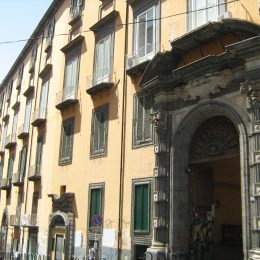

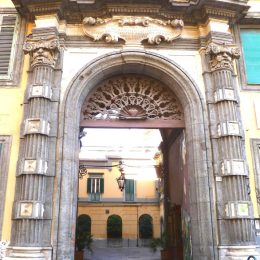
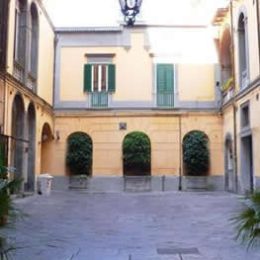
FOCUS: “del Gas” Palace
Not everyone knows that the great painter Edgard Degas had his paternal grandparents and a Neapolitan father. Who were the Degas? Family originally from France from the Languedoc region (Langue d’Oc) with the surname De Gas, De Gast, De Guast and after the French revolution in today’s form of Degas, nobles and lords with the predicate “De Bagnolis” from the thirteenth century, to which they added the current surname in the sixteenth century, inscribed in the nobility and
And in the “Catalog of Gentlemen” of the province of Languedoc from November 8, 1670, with the blazon recorded in the “Armorial Generale” year 1696 and in the “Registre de la Generalitè de Montpelier” on sheet 537, knights of the prestigious order of Orleans, royals of France, from which the istrice in the center of the family coat of arms. They settled in the province of Orleans in Meung…
Brigantino – Il Portale del Sud

About Us
Maison Degas is a cozy structure located in the heart of Naples, inside a fascinating historic building. Our spaces tell the art of Edgar Degas, the rooms offer comfort, brightness, particular perspectives that capture the eyes: discover the true essence of Naples, feeling at home to live a comfortable stay full of attention!
Download app


Contact Us
-
Calata Trinità Maggiore, 53 80134 Naples, Italy
Adjacent to Piazza del Gesù Nuovo (interior Palazzo Pignatelli di Monteleone) Staircase B third floor with elevator - +39.081.0608252
- +39.371.155.11.63
- info@maisondegas.it
-
Reception hours: 08:00 - 20:00 | Sunday 8:00 - 13.00 |
15:00 - 20:00 - Monday / Sunday
- CUSR Unique code 15063049EXT3356
Subscribe to our Newsletter
Receive useful information, travel guides and much more for your vacation.
- Copyright © 2024 Maison Degas P. IVA 06043421210
- CUSR Unique code 15063049EXT3356
- Made by Culture Digitali s.r.l.
- info@maisondegas.it





